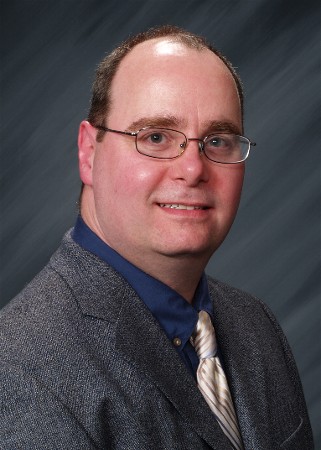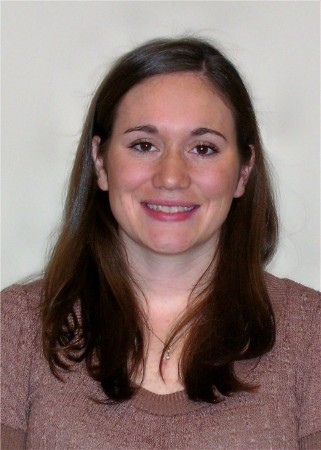Org. Synth. 2008, 85, 10
DOI: 10.15227/orgsyn.085.0010
SELECTIVE TRIALKYLATION OF CYCLEN WITH tert-BUTYL BROMOACETATE
[1,4,7,10-Tetraazacyclododecane-1,4,7-triacetic acid, Tri-tert-butyl Ester Hydrobromide]
Submitted by Dennis A. Moore
1
Checked by Leslie Patterson and Marvin J. Miller.
1. Procedure
Warning: tert-Butyl bromoacetate is a lachrymator. The reagent, reaction and its work-up should be handled in an adequately ventilated fume hood while wearing gloves, safety glasses and laboratory coat.
A 250-mL, four-necked, round-bottomed flask, fitted with a mechanical stirrer (Teflon paddle, 6 × 1.8 cm), a condenser fitted with a nitrogen inlet on top, thermometer and pressure-equalizing addition funnel is charged with cyclen (5.0 g, 0.029 mol), sodium acetate trihydrate (13.0 g, 0.096 mol) and dimethylacetamide (40 mL) (Note 1). The heterogeneous mixture is stirred for 30 min, allowing the initial endotherm to subside. To this mixture is added, by means of the addition funnel, a solution of tert-butyl bromoacetate (18.7 g, 14.1 mL, 0.096 mol), in dimethylacetamide (20 mL), dropwise, over 30 min. The rate of the addition is adjusted so as to keep the temperature of the reaction mixture 20-25 °C (Notes 2 and 3). After complete addition, the mixture is allowed to stir for 60 h (Note 4). The mixture is then diluted with diethyl ether (20 mL), cooled to -10 to -15 °C (bath temperature), by means of an ice-methanol bath, and is stirred for 2 h. The resulting precipitated solid is collected by filtration on a coarse glass frit, then is washed with cold (-10 to -15 °C), fresh dimethylacetamide (10 mL), suctioned dry, and then is washed with cold diethyl ether (2 × 25 mL) and suctioned dry again. The crude, white solid (19.7 g) is dissolved in chloroform (100 mL) and the solution washed with water (2 × 15 mL) and sat. aq. NaBr solution (1 × 15 mL) (Note 5). The organic phase is collected, then is dried over magnesium sulfate and filtered with suction through Whatman #4 paper on a porcelain Buchner funnel. The filtrate is transferred to a 250-mL single necked round-bottomed flask and is concentrated by rotary evaporation (25-35 °C water bath, 3-15 mmHg) to a thin, colorless oil (approximately 40 g) (Note 6). A magnetic stir bar is added to the evaporation flask and the oil is diluted with hexanes, (80 mL) with stirring. Crystallization begins after a few minutes of stirring. The mixture is stirred at room temperature for 3 h, then is cooled to -10 to -15 °C (bath temperature), by means of an ice-methanol bath, and is stirred for an additional 2 h. The resulting white solid is collected by filtration, then is washed with cold, hexanes/chloroform (4/1, 25 mL), suctioned dry and is dried in vacuo (15 mmHg) overnight at room temperature to afford 11.2 g (65%) of the product as a white, amorphous solid (Notes 7, 8 and 9).
2. Notes
1.
Cyclen, 1,4,7,10-tetraazacyclododecane (min. 98%), was purchased from Strem.
tert-Butyl bromoacetate (98%), dimethylacetamide (99.9%) and
anhydrous magnesium sulfate (Analytical Reagent) were obtained from the Aldrich Chemical Co. and were used as received.
Chloroform (100%, with 0.75% ethanol added) (Acros),
hexanes (95% n-hexane) (Fisher),
sodium acetate trihydrate (99.28%) (Acros) were all used as received.
2.
Short temperature excursions above 25 °C were not overly harmful to the yield, but heating above 35 °C for an extended period of time, e.g. overnight, reduced both the yield and purity of the product. The temperature was kept at 25-26 °C. A few pieces of ice were needed to allow the temperature to remain under 26 °C and for the addition to be complete in 30 min.
3.
The initial third of the addition was quite exothermic, so a water cooling bath was needed intermittently. During the course of the addition, most of the solids dissolved. Near the end of the addition, the crude product began to precipitate from the pale, amber mixture as a white solid.
4.
Shorter reaction time, e.g. 24-48 hours, decreased the yield by 10-15%. Longer reaction time did not improve the yield.
5.
Using saturated sodium chloride in the final washing allowed for halide exchange, resulting in the isolation of a mixed Br
-, Cl
- salt according to the submitter. The material prepared by the checkers analyzed correctly for the bromide salt
(Note 8).
6.
On this scale of reaction the target mass of evaporated oil, consisting of product plus chloroform, should be 36-44 g. If too much chloroform was removed by evaporation, the difference was made up by adding enough chloroform to achieve approximately 40 g of solution, at which time it was possible to proceed with the crystallization as normal.
7.
The submitters performed the same procedure with 25 g of cyclen and when everything else was scaled appropriately, they obtained 69.5 g (80% yield).
8.
1H NMR
pdf (500 MHz, CDCl
3) δ: 1.42 (s, 9 H), 1.43 (s, 18 H), 2.81-2.95 (br, m, 1 2H), 3.07 (br, m, 4 H), 3.26 (s, 2 H), 3.35 (s, 4), 9.99 (br, s, 2 H).
13C NMR
pdf (125.70 MHz, CDCl
3) δ: 28.07, 28.11, 47.4, 48.6, 49.0, 51.1, 51.2, 58.1, 81.6, 81.7, 169.5, 170.4. mp: 179-181 °C (d). Anal. Calcd. For C
26H
51BrN
4O
6: C, 52.43; H, 8.63; N, 9.41. Found: C, 52.63; H, 8.43; N, 9.36.
9.
The product appeared to be stable at room temperature, with no extraordinary measures taken, for at least several months.
Handling and Disposal of Hazardous Chemicals
The procedures in this article are intended for use only by persons with prior training in experimental organic chemistry. All hazardous materials should be handled using the standard procedures for work with chemicals described in references such as "Prudent Practices in the Laboratory" (The National Academies Press, Washington, D.C., 2011 www.nap.edu). All chemical waste should be disposed of in accordance with local regulations. For general guidelines for the management of chemical waste, see Chapter 8 of Prudent Practices.
These procedures must be conducted at one's own risk. Organic Syntheses, Inc., its Editors, and its Board of Directors do not warrant or guarantee the safety of individuals using these procedures and hereby disclaim any liability for any injuries or damages claimed to have resulted from or related in any way to the procedures herein.
3. Discussion
DO3A tris(
t-Bu ester) continues to be a compound of interest as a useful scaffold for the synthesis of bifunctional chelates.
2 Our procedure is an adaptation of the earliest, most detailed, reported preparations. However, these procedures call for much longer reaction times or more complicated isolation procedures.
3 For instance, Berg, et al. reported a procedure that required a reaction time of six days and chromatographic purification prior to isolation. Whereas, Himmelsbach, et al, allowed the reaction to proceed for nineteen days and needed to isolate a second crystallization-crop of product to achieve a reasonable yield. More recently, Li, et al,
4 reported performing the reaction with chloroform and triethylamine, curiously giving the HCl salt after chromatographic purification. Very recently, Mishra
5 reported that the reaction could be carried out in chloroform without the need for a base, like sodium acetate. Though the yield appeared to be good, the procedure was not very detailed.
The origin of the observed selectivity appears to be the precipitation of the trialkylated HBr salt from the reaction mixture, thereby preventing tetraalkylation. Our technique is a routine, scalable procedure in our laboratory, affording material in good yield and purity.
Appendix
Chemical Abstracts Nomenclature (Collective Index Number);
(Registry Number)
Cyclen: 1,4,7,10-Tetraazacyclododecane; 294-90-6
Sodium acetate trihydrate; (6131-90-4)
tert-Butyl bromoacetate; (5292-43-3)
1,4,7,10-Tetraazacyclododecane-1,4,7-triacetic acid, Tri-tert-butyl Ester Hydrobromide: 1,4,7,10-Tetraazacyclododecane-1,4,7-tricarboxylic acid, 1,4,7-tris(1,1-dimethylethyl) ester; (175854-39-4)
 |
Dennis Moore received his B.S. degree in Chemistry from Southeast Missouri State University in 1982, his A.M., 1984, and his Ph.D., 1987, in Chemistry from Washington University in St. Louis with John Bleeke. Following a short postdoctoral stint at Washington University School of Medicine with Michael Welch, he joined Mallinckrodt in St. Louis performing research for the search for new magnetic resonance contrast agents. From 1999 to 2003, he held positions with AnorMed, British Columbia, and Cambridge-Major Laboratories, Wisconsin. In 2004 he returned to Mallinckrodt, where he has since been a Principal Scientist in contrast media research. His current research is focused on the synthesis of macrocyclic metal complexes for use in diagnostic radiology. |
 |
Leslie Patterson is a 4th year graduate student at the University of Notre Dame. She is co-advised by Marvin J. Miller and Paul Helquist. She received her B.S. in Biology-Chemistry from Manchester College in North Manchester, Indiana. She is currently working to prepare synthetic siderophore conjugates for therapeutic and diagnostic applications. |
Copyright © 1921-, Organic Syntheses, Inc. All Rights Reserved